

William Stopford
2026 Suzuki Jimny XL review
1 Day Ago
The Hyundai Ioniq 5 N is one of the most complex cars I've ever driven, but it's simply a remarkable feat of engineering.
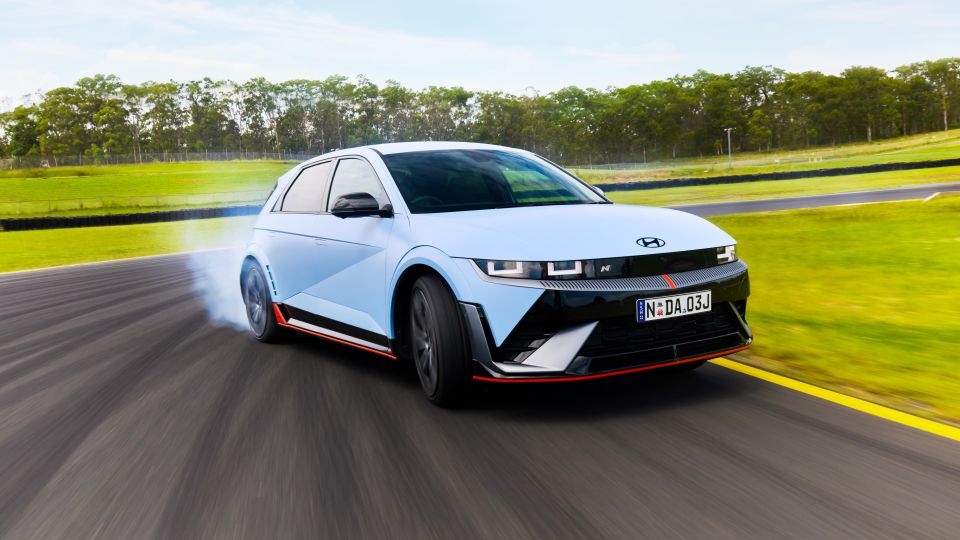


Marketplace Editor

Marketplace Editor


Marketplace Editor

Marketplace Editor
Quickly see how this car stacks up against its competition. Select any benchmark to see more details.
Where expert car reviews meet expert car buying – CarExpert gives you trusted advice, personalised service and real savings on your next new car.
Hyundai’s go-fast N products have made a name for themselves being fast, fun and attainable.
But when you throw the 2024 Hyundai Ioniq 5 N into the mix – priced from an eye-watering $111,000 before on-roads – the attainable part of that recipe is thrown out the window for a lot of people.
So what’s its purpose? Well, for starters it’s the first all-electric Hyundai N car. And, it’s a proper showcase of what the brand’s engineers can do with the Hyundai Group’s E-GMP dedicated electric architecture and componentry.
The Ioniq 5 N is like no other production Hyundai before it, either. Zero to 100km/h takes just 3.4 seconds in its most aggressive N Grin Boost setting, and top speed is rated at 260km/h. Even more, it boasts a whopping 478kW and 770Nm.

That’s even more than Kia’s manic EV6 GT, which is based on the same underpinnings – Kia’s version offers 430kW and 740Nm, which is just under the Ioniq 5 N’s outputs when it’s not in N Grin Boost mode. Beyond its straight-line performance, the Ioniq 5 N is also making bold claims about track ability which is a key pillar of the N brand.
So to test the company’s claims, we attended the Australian media launch in New South Wales, testing Hyundai’s new flagship on road and on track. How did it fare? Read on to find out.
The Ioniq 5 N sits at the top of the tree, commanding a near $30,000 premium over the next most expensive variant.
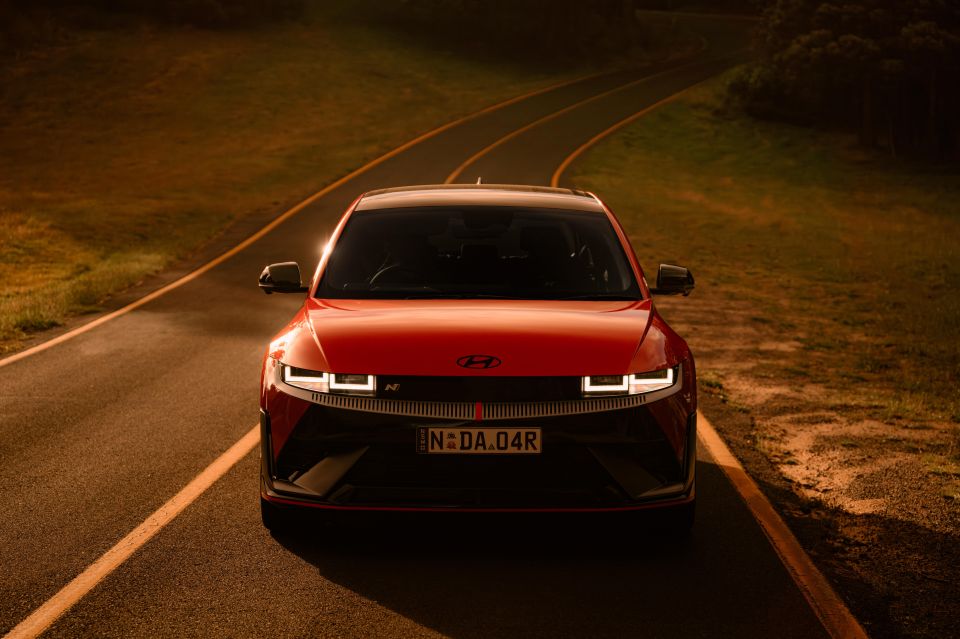
2024 Hyundai Ioniq 5 pricing:
Price excludes on-road costs
To see how the Ioniq 5 shapes up against its rivals, check out our comparisons tool.
Buy your new car without the stress. It's fast, simple and completely free.

Great service from Travis and team, second time I have used this business would not hesitate to recommend them to anyone
Craig C.
Purchased a Ford Ranger in Sunshine Coast, QLD
CarExpert helped Craig save $7,224 on his Ford Ranger, now let us save you on your next new car.
Get your BEST priceThe revised interior of the Ioniq 5 N previews upcoming revisions for the standard car – as revealed earlier this week.
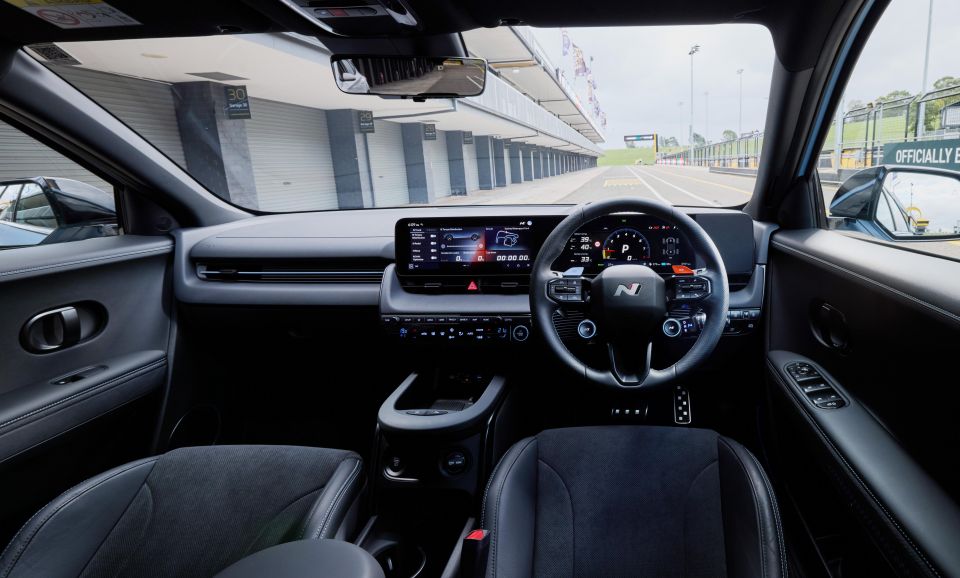
Compared to the standard Ioniq 5, the N has a more conventional dashboard and console design and also debuts the Hyundai-Kia ccNC dual 12.3-inch displays for the driver’s cluster and infotainment system.
This means there’s the latest generation of Bluelink connected and remote services, wireless Apple CarPlay and Android Auto, as well as the latest UX design which has been seen in the likes of the Kona and Kia Sorento.
It’s a great system with net-based satellite navigation to bolster available mapping from a connected smartphone, as well as over-the-air (OTA) software updates and a cleaner and more upmarket interface.
The Ioniq 5 N also features the first N instrument cluster layout in the brand’s electric range, and the configurable central tacho dial looks really cool, almost Lamborghini like. I much prefer virtual gauges as opposed to the line bar displays in earlier E-GMP products.
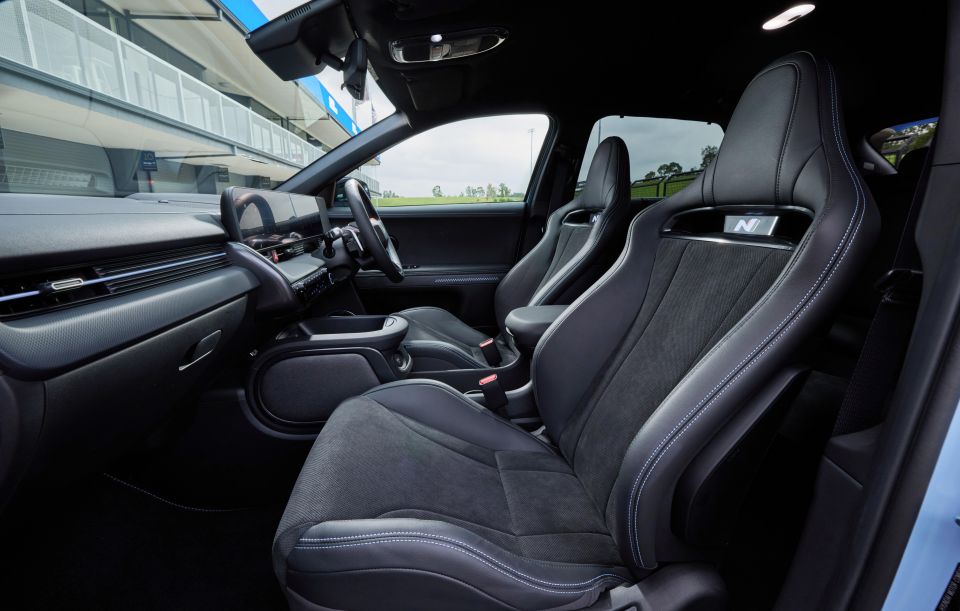
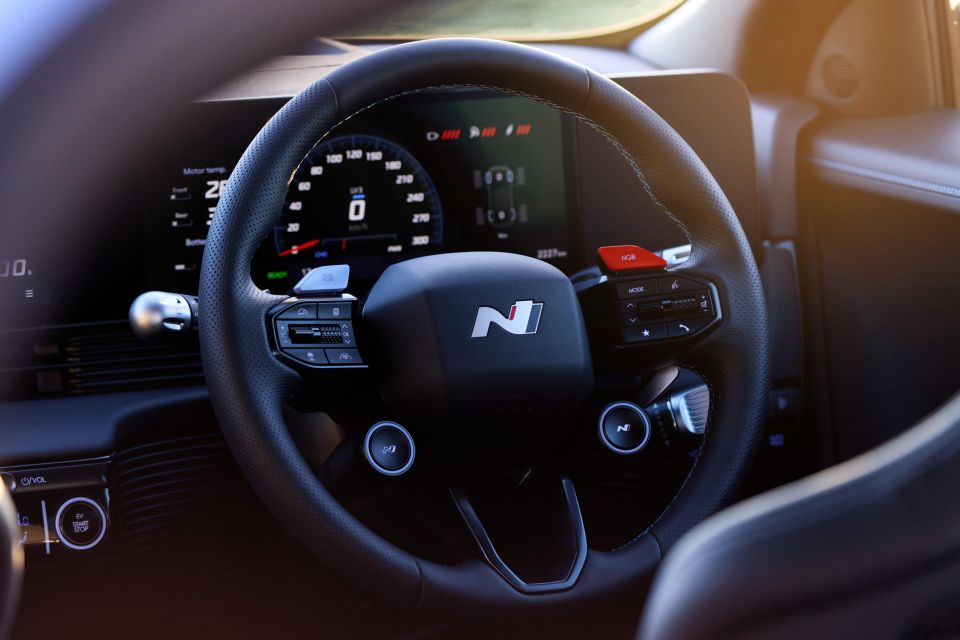
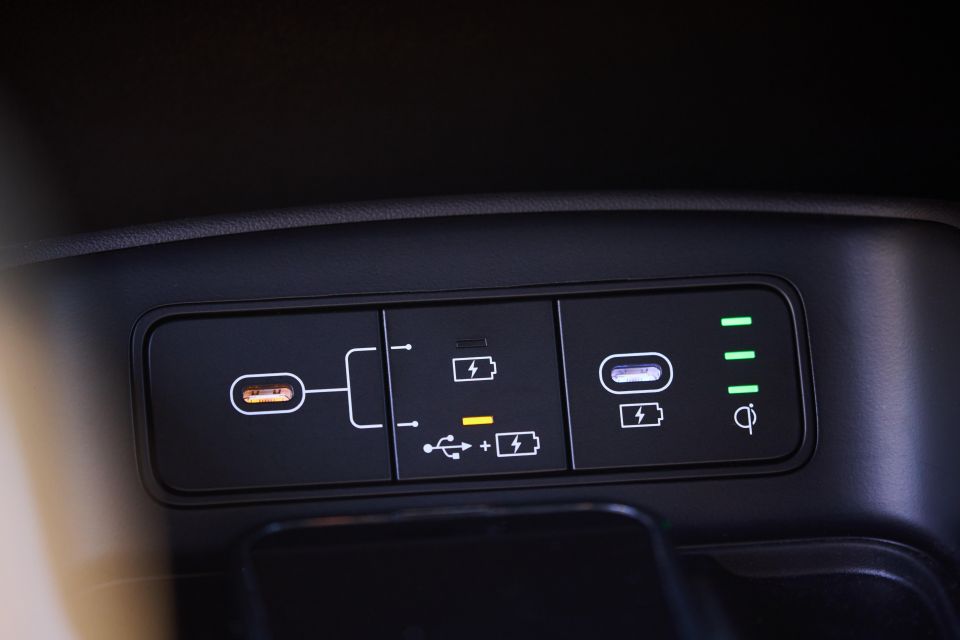
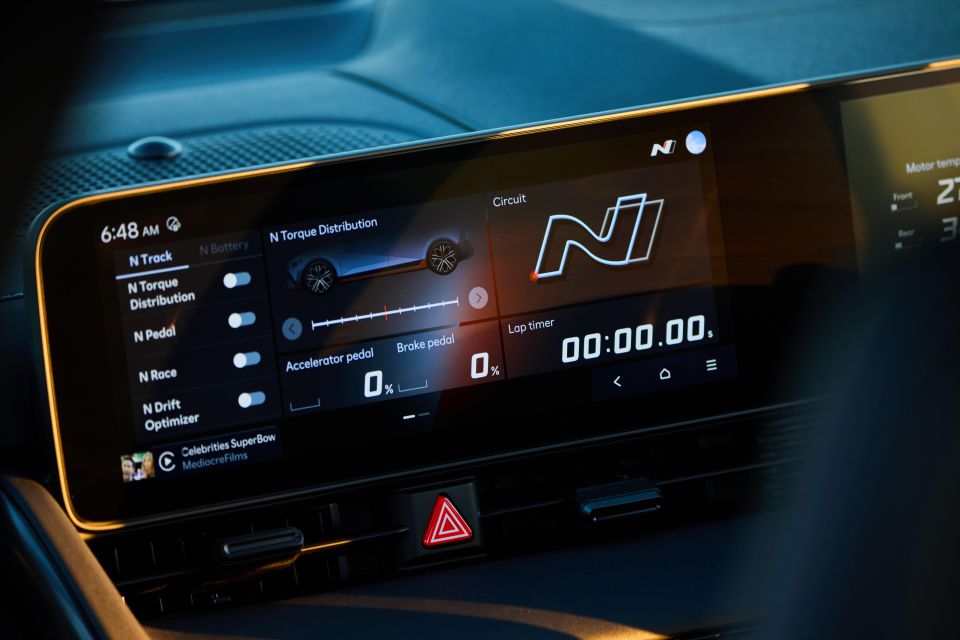
Up front there are N Light bucket seats which look and feel racy thanks to their integrated headrests and illuminated N logos, as well as the combination leather and Alcantara trim.
Even better, the front seats are heated and ventilated with three-stage controls. That certainly makes up for the manual adjustment, which while not an issue for me is a sticking point for some expecting some more luxuries.
There’s otherwise heaps of storage even with the removal of a movable centre console, including a gripped open smartphone charging slot and plenty of nooks and crannies to keep your trinkets secure when having a crack.
You also get USB-C charging ports now, which are faster charging than the USB-A ones in the pre-update Ioniq 5 currently on sale. You can use smartphone mirroring via cable if you wish, too.
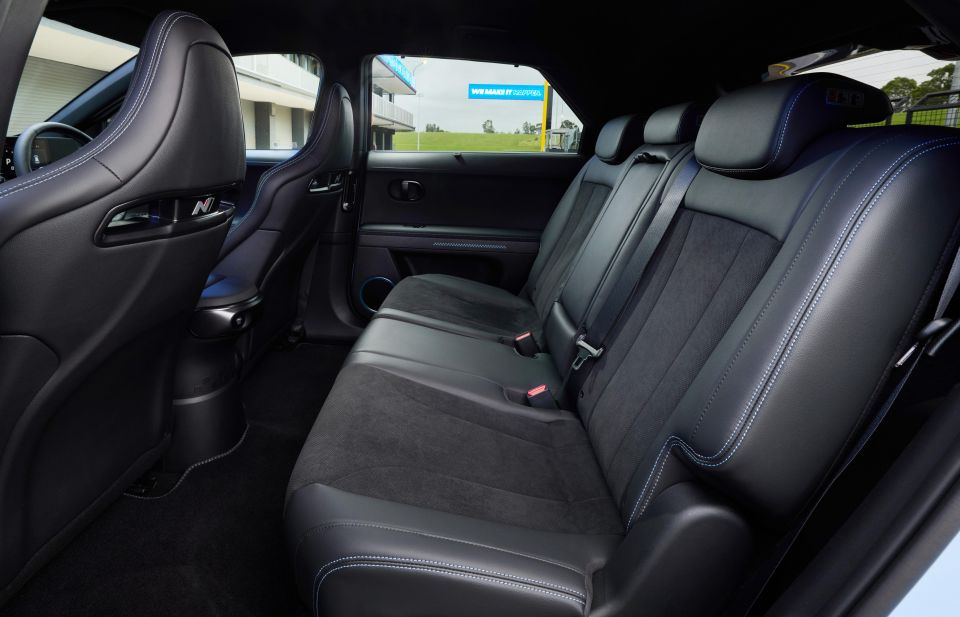
Despite the N’s driver focus, the rear seat remains a practical space if you have some co-drivers coming with you for a spirited blat.
Head and leg room are still very good for taller adults like 6’1 me (the massive 3000mm wheelbase will do that) though the sporty front seats will obstruct forward view for your rear passengers – something to note if you have nausea-prone kiddies.
Speaking of the kiddies, the Ioniq 5 N retains its outboard ISOFIX anchors and top tether points, meaning this track-capable electric express can also ferry around your precious little ones.
Other amenities include pillar-mounted rear air vents, a fold-down centre armrest with cupholders, bottle holders in the doors, and even a vehicle-to-load (V2L) connector with domestic three-pin outlet under the rear seat.
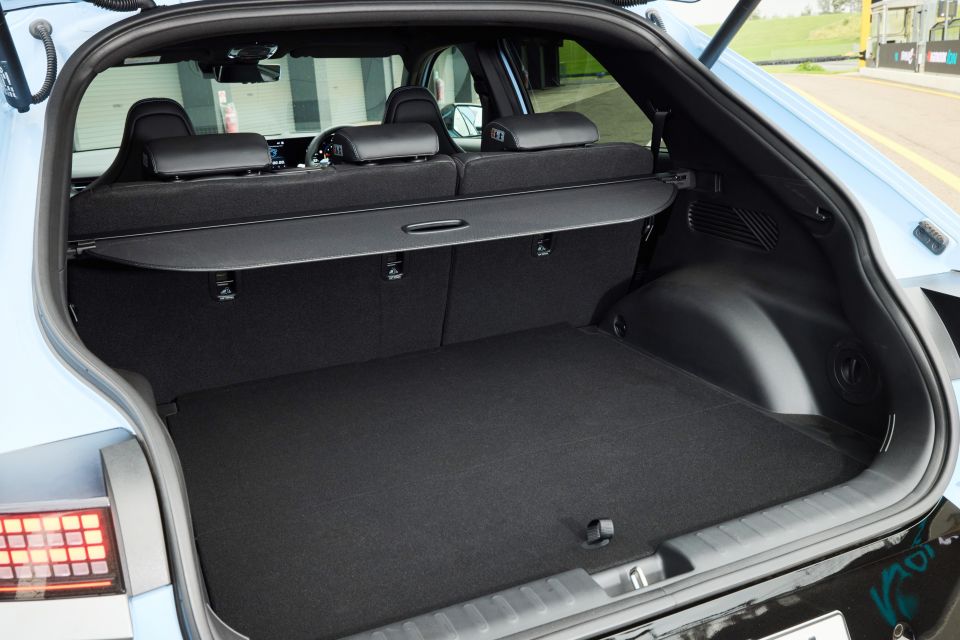
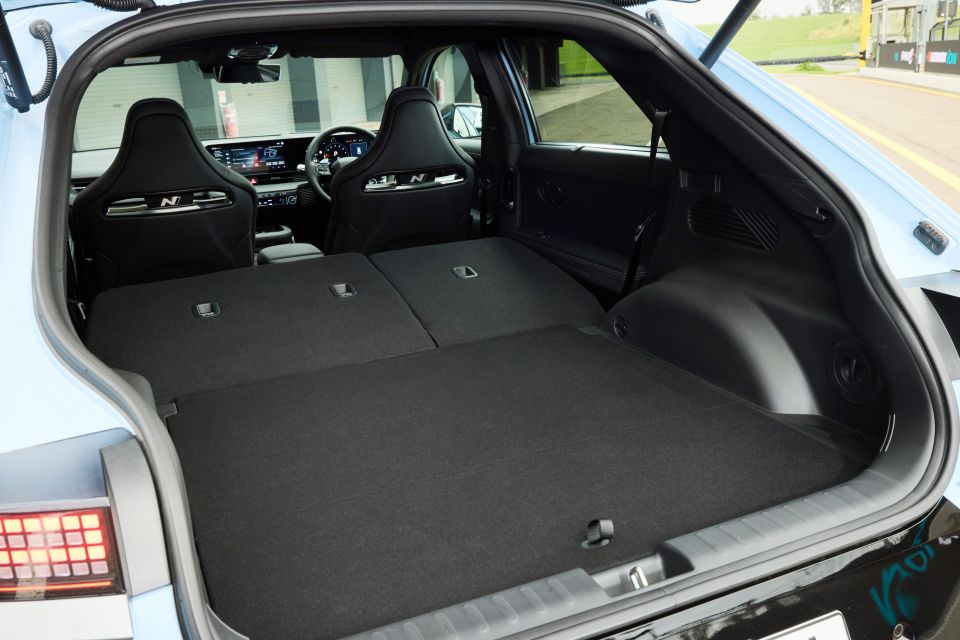
The Ioniq 5 N offers 480 litres of cargo volume with the rear seats in place, expanding to 1362L with them folded. That’s just under 50L less than non-N versions, and there’s no additional ‘frunk’ storage like other variants.
Like most EVs, the Ioniq 5 N makes do with a tyre mobility kit in lieu of a space saver spare.
The Ioniq 5 N is packing some serious e-firepower.

| Model | Ioniq 5 N |
|---|---|
| Front electric motor power | 166kW (175kW with N Grin Boost) |
| Front electric motor torque | 350Nm (370Nm with N Grin Boost) |
| Rear electric motor power | 282kW (370kW with N Grin Boost) |
| Rear electric motor torque | 390Nm (400Nm with N Grin Boost) |
| System power | 448kW (478kW with N Grin Boost) |
| System torque | 740Nm (770Nm with N Grin Boost) |
| Battery | 84kWh li-ion |
| Driven Wheels | All-wheel drive |
| Range (claimed) | 448km (WLTP) |
| 0-100km/h sprint time | 3.5 seconds (3.4s with N Grin Boost) |
| Top Speed | 260km/h |
| Weight | 2230kg (tare) |
| Energy consumption (claimed) | 21.2kWh/100km |
Day one was on-road, so let’s start with that.
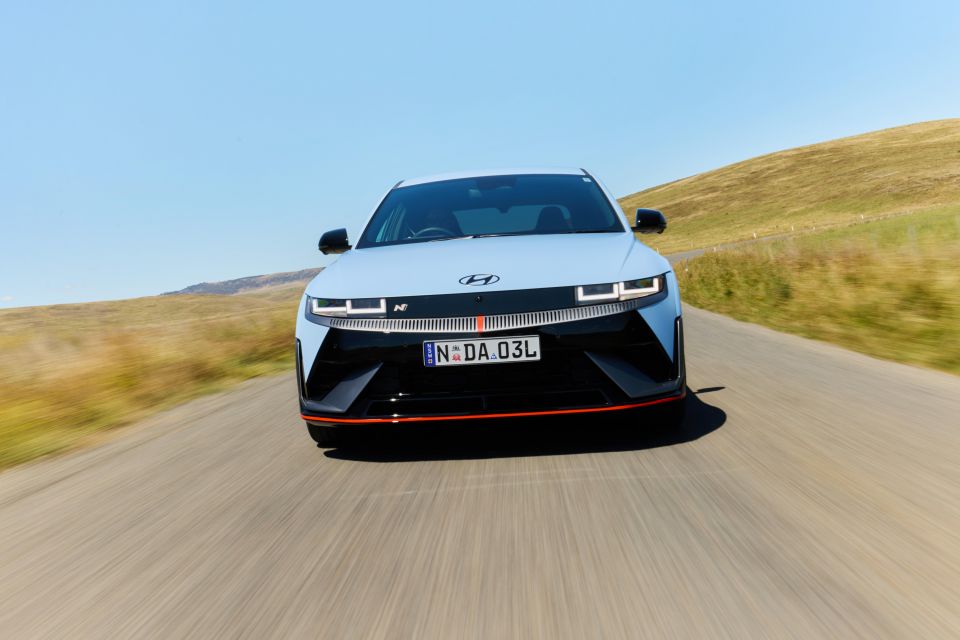
Leaving our hotel in Blacktown, NSW, firing up the Ioniq 5 N with its synthesised engine sounds was laughter-inducing. A whole line of these things suddenly started a chorus of fake revs to the redline.
There are eight interior speakers and two exterior ones to play the sounds, which makes it more than just an in-car experience. You can choose from three profiles as well, ranging from an airy jet fighter-like sound to a note that’s modelled off the i30 N’s vocal turbocharged petrol engine.
I know it sounds stupid, but it’s a charming detail that you have to experience to appreciate. Silence is apart of the EV experience, yes, but that doesn’t mean petrol heads converting to electric power don’t want some aural drama.
For some this may still be a gimmick, but props to Hyundai for trying something different – there’s more we’ll get onto in a bit.
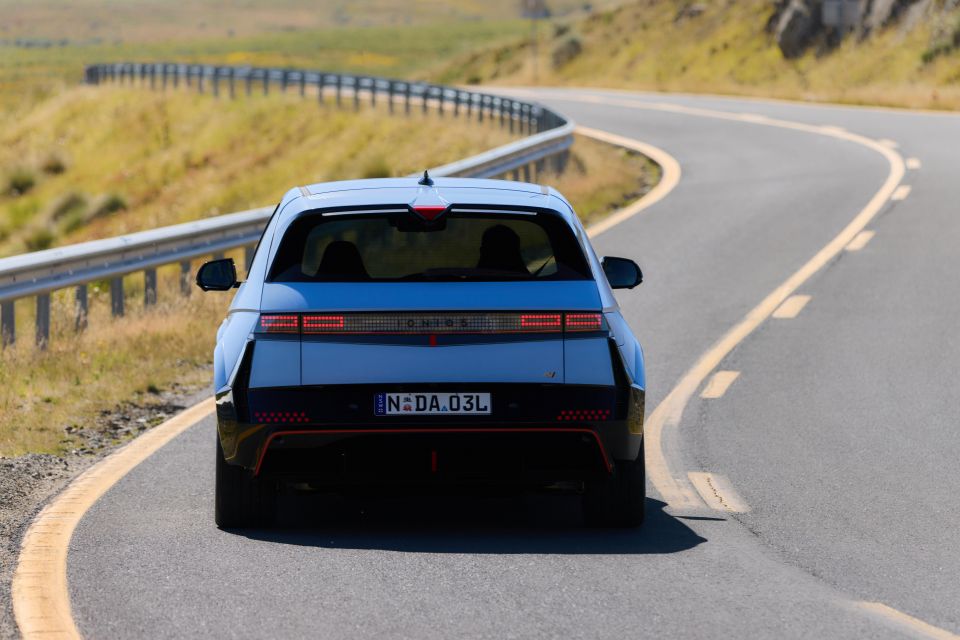
Our road drive took us through Blacktown and out towards Laguna in regional NSW. We drove through suburban environments, freeways, B-roads and the like.
I was so enamoured by the N Custom mode with its simulated gearshifts, engine revs and engine sound that I did the bulk of my drive in this mode. You can ask my co-driver, I couldn’t wipe the smile off my face.
Performance is plentiful as you’d expect, with 740Nm at your disposal from standstill. For reference, that’s the sort of twist you get out of a twin-turbo Mercedes-AMG V8.
It fires off the line if you stab the throttle, pinning you in your seat and you can almost feel your stomach hit your throat. You’ll beat just about any other car in the traffic light drag race – unless you come up against a hypercar.
You don’t really need this kind of performance in everyday scenarios, but the inner boy racer in me definitely enjoyed zipping through urban streets and roundabouts.
If this firmer N Mode settings get a bit bouncy and the augmented drivetrain sounds droney, then you can par it all back by pressing the steering-mounted drive mode button into Eco or Normal modes and drive this like any other Hyundai Ioniq 5.
At a cruise in town or on the highway, the electric N quietly scoots along and still retains a swift level of performance for overtaking or zipping out from a slip lane. Road and wind noise are fairly well suppressed but those grippy Pirelli P Zero sports tyres – specifically developed for this car, mind you – can produce a bit of road roar on coarser blacktop.
Each mode sees adjustments to the suspension, throttle and steering calibrations too, ranging from firm to light and assisted. It’s never too loose or too harsh in my opinion, even in N mode, but the wide range of adjustability is something we celebrate about VW Group products, for example.
I did find the Highway Driving Assist (HDA) system would make the odd error during our stint on the Pacific Highway, at one point drifting into the next lane on a curve that really wasn’t all that sharp. It’s not something I experienced in the Kia EV9 or the Genesis G70 Shooting Brake, so it could be an isolated incident.
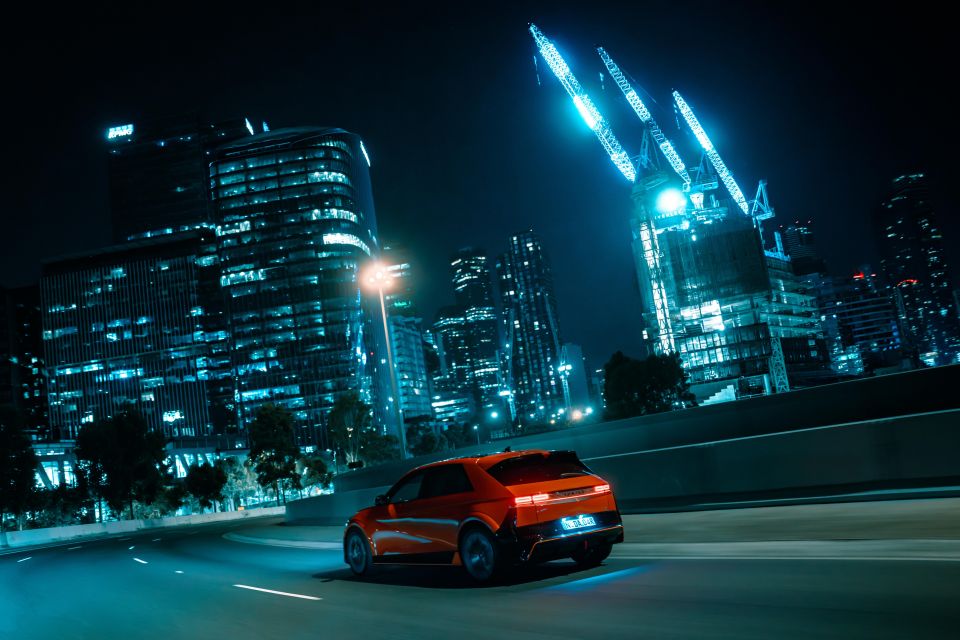
Once we hit the winding back roads towards Laguna, I was able to test out the Ioniq 5 N’s hillclimb capabilities.
The high-speed and twisty roads into the hills are the Ioniq 5 N’s hunting ground. It gives it plenty of space to stretch its legs, and there’s so much grip that you can corner with confidence in this 2230kg (tare) hulking beast.
With a torque vectoring function up front and an electronic limited slip differential (E-LSD) at the rear, the Ioniq 5 N turns in quickly and neatly, then blasts you out of corners with its mighty dual-motor drivetrian.
Really, it’s quicker than you’re able to utilise legally on Australian public roads – blink and you’ve eclipsed 100km/h.
I used the B-road blat as an opportunity to really try out the N e-Shift function in performance driving, which simulates the shifts of the brand’s eight-speed DCT used in the i30 N.
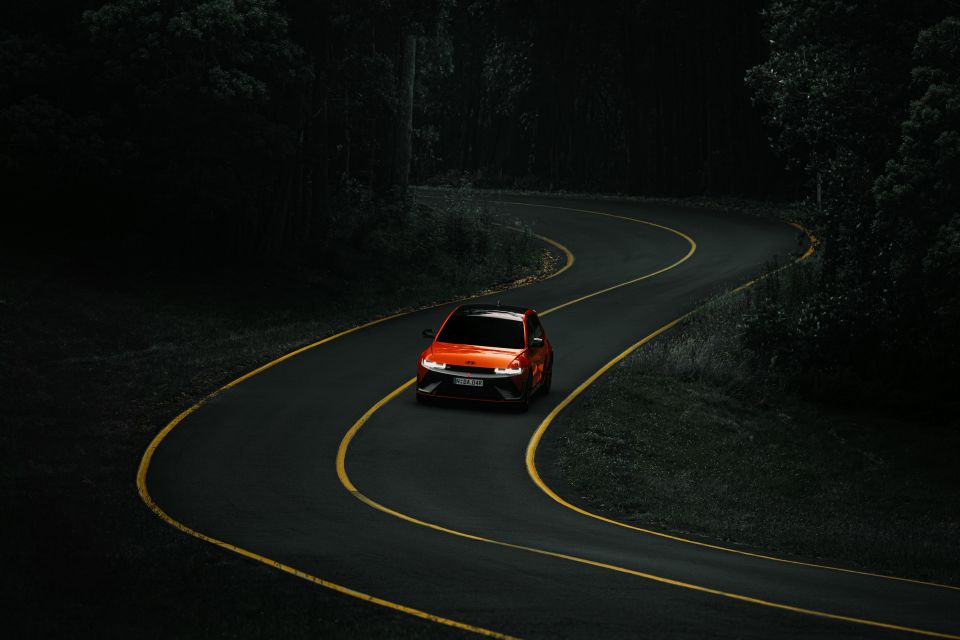
This adds a more conventional point of engagement with the vehicle, and the way it jolts between shifts is really convincing to the point you might occasionally forget you’re driving an EV. If there was a criticism, that feeling of engine braking as you downshift wasn’t really replicated – but this is a fairly small thing.
It’s otherwise really good fun to rifle through the gears and watch the virtual tacho needle swing towards the fantasy redline. There are even shift light, audible pops and cracks on upshifts and overrun – it’s just silly, but in the best way.
Even set to its harshest setup, the Ioniq 5 N never felt too firm on the poorer surfaces of the Great North Road, and strikes the same sort of delicate balance you’d expect of a benchmark performance model. Comparisons to the likes of the Audi e-tron GT and Porsche Taycan were thrown around by journalists on the event, and that’s a massive compliment.
Only if you came in too hot could you really feel all of the Ioniq 5 N’s heft, as a sudden correction or change of direction would cause it to shift quite noticeably and upset the balance somewhat. Even then, it’s very impressive for what it is.
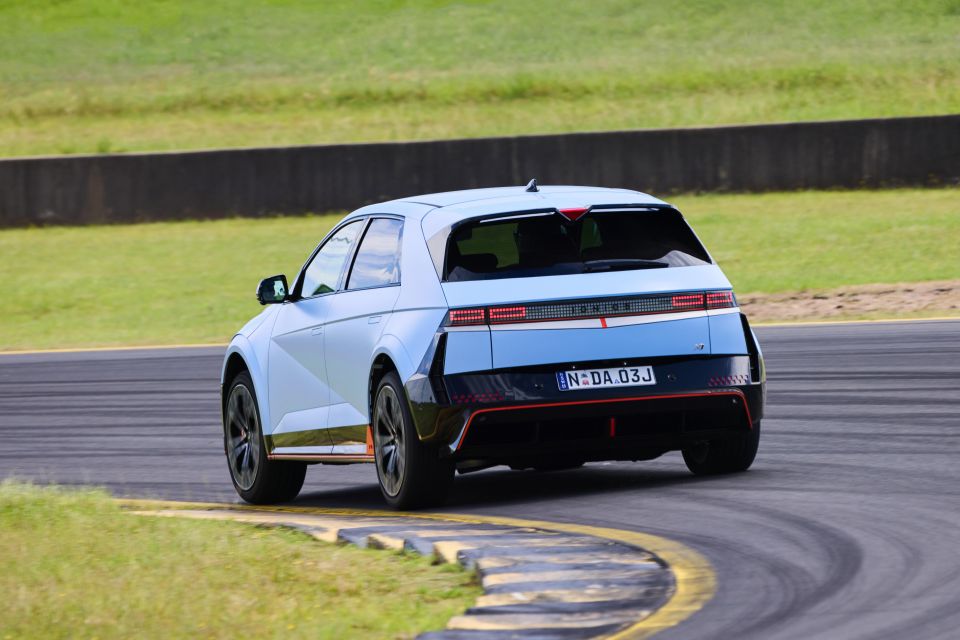
Day two was all about the track – so we headed to Eastern Creek Raceway at Sydney Motorsport Park.
Uninhibited by public speed limits, the circuit setting gave us the chance to fully unleash the Ioniq 5 N. We used the GP Circuit, which is a 3.93km route that includes long straights, sweeping curves and some tighter hairpins.
After getting some pointers from Hyundai’s TCR champion, Josh Buchan, I had a proper crack at a series of laps. This thing really flies, only starting to run out of momentum as you see the speedo eclipse 215km/h on the main straight.
It holds on admirably through higher speed corners, though on the odd occasion you can feel its weight illicit some understeer, and if you hit the throttle hard too early out of an apex the back might kick out.
Even so, it’s all very controllable and even for someone not a seasoned track driver like myself, the Ioniq 5 N instills a lot of confidence to push on and wring its neck – it basically begs you for it.

Where expert car reviews meet expert car buying – CarExpert gives you trusted advice, personalised service and real savings on your next new car.
I didn’t try out the N Drift Optimiser, which manages torque distribution to maintain the perfect sideways slide. Nor did I try out the Left Foot Braking or N Pedal functions, the latter offering one-pedal driving for “pro driver style weight transfer and turn in”
Even after numerous track sessions – which were one out lap, two or three hot laps, then one in lap – the brakes didn’t appear to fade noticeably – those beefy 400mm front rotors with four-piston calipers and 360mm rears are pretty beefy, mind you. The P Zero tyres also held up very well for grip. I did hear, though, that a drift session the previous day for B-roll had chewed up a set of rears pretty quickly.
But really props to Hyundai for coming up with an electric performance car that emulates a combustion engined performance and track experience in a way that’s fun and objectively capable. The brand’s reps openly said their N cars are more about fun and smiles than outright lap times, and this definitely achieves that.
It makes me wonder if a future Hyundai N EV that’s a little smaller and lighter could make it to production, it would be almost unstoppable with all the Ioniq 5 N’s cool gadgetry on board. Even a lower and sleeker Ioniq 6 N could be a more focused weapon – and the RN22e rolling lab concept is proof something like that is well on the way.
Ioniq 5 N highlights:
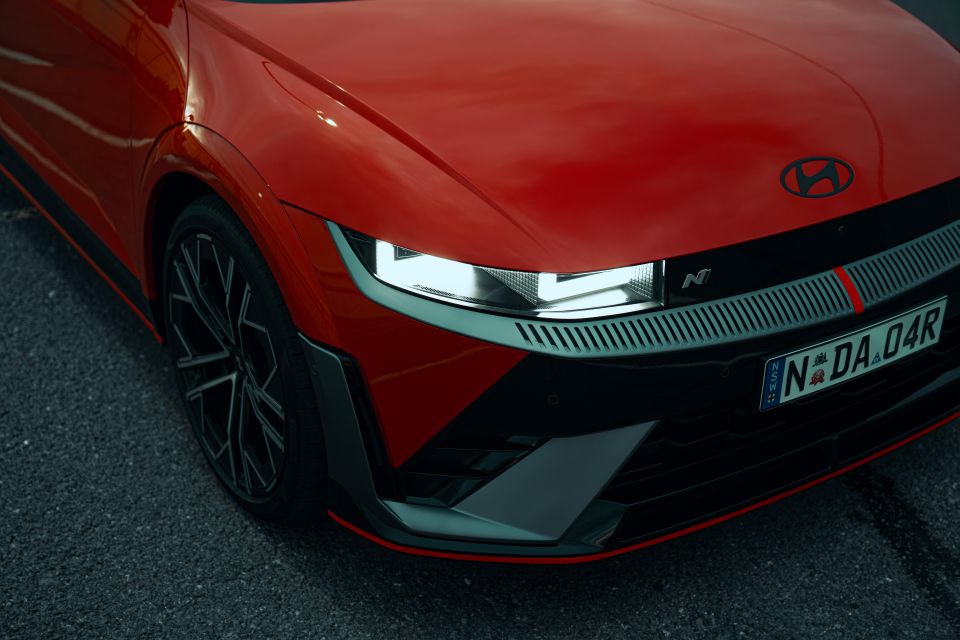

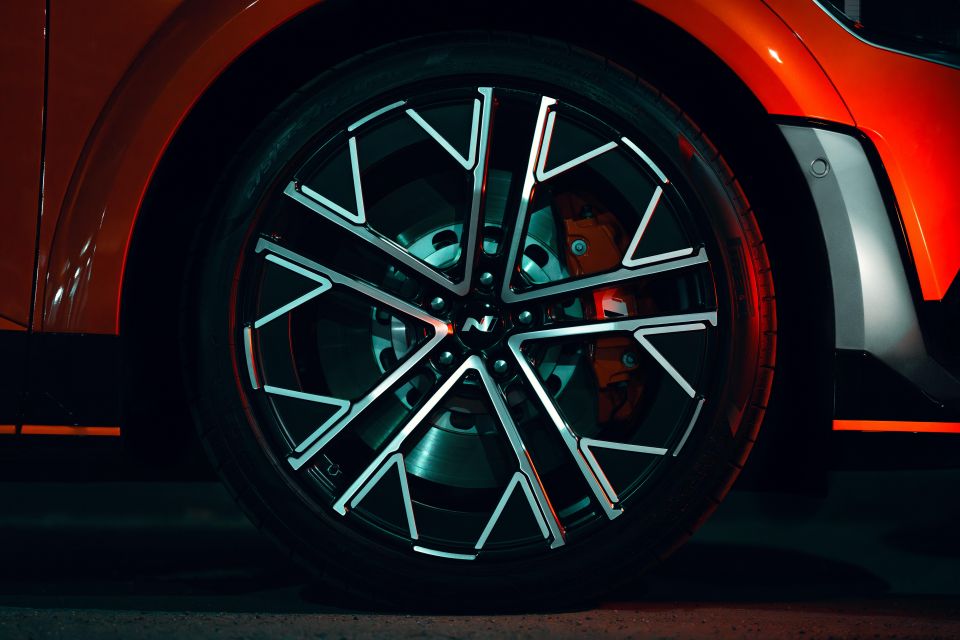
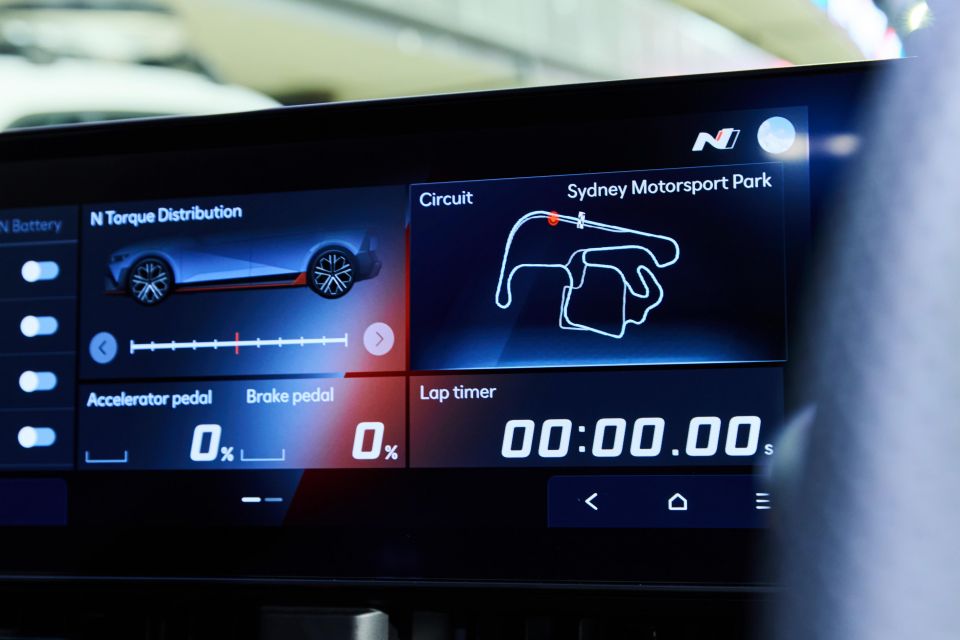
A Vision Roof – or fixed panoramic glass roof – is a $2000 option.
While the standard Hyundai Ioniq 5 has a five-star ANCAP safety rating, the N is unrated for now.
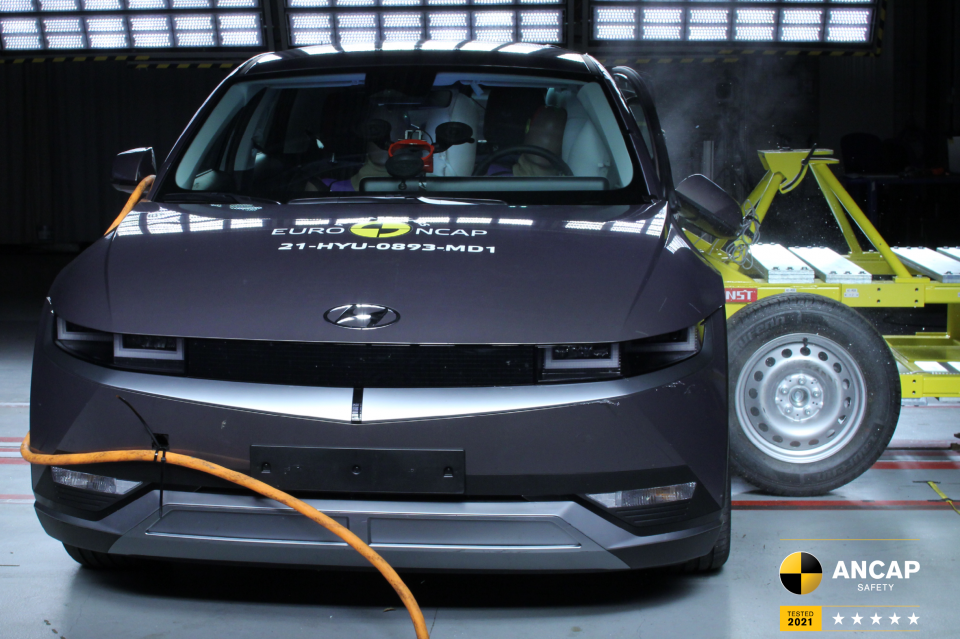
Standard safety equipment includes:
The Ioniq 5 N is backed by a five-year, unlimited-kilometre vehicle warranty and an eight-year, 160,000km battery warranty.
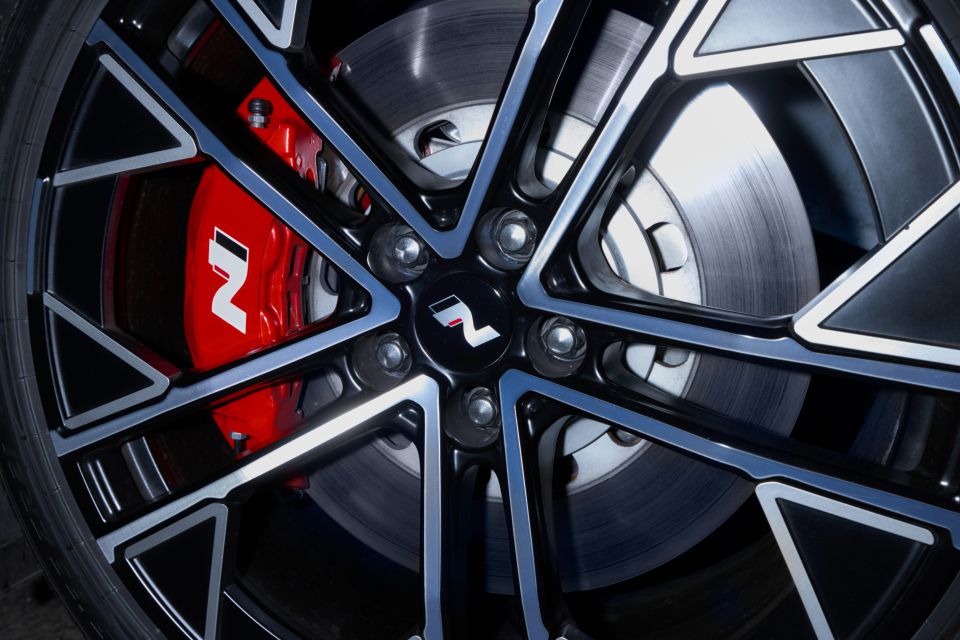
Servicing is required every 24 months or 30,000km, whichever comes first. The first three services are capped at $625 each.
While we didn’t do a proper range and charging test on the launch, and therefore unable to give you real-world efficiency figures and range projections, using this car in the intended way will make it hard to hit that 448km claim.
That said, we were seeing low to mid-20kWh/100km from the trip computer during more sedate sections of driving, making Hyundai’s 21.2kWh efficiency claim seem accurate.
Further, the company claims the Ioniq 5 N’s larger 84kWh lithium-ion battery can be charged from 10 to 80 per cent in around 70 minutes with a 50kW DC charger, or 18 minutes at its maximum 350kW rate. At 7kW via AC charging, you’re looking at 10 hours 50 minutes.
Buy your new car without the stress. It's fast, simple and completely free.

Great service from Travis and team, second time I have used this business would not hesitate to recommend them to anyone
Craig C.
Purchased a Ford Ranger in Sunshine Coast, QLD
CarExpert helped Craig save $7,224 on his Ford Ranger, now let us save you on your next new car.
Get your BEST priceI thought the EV6 GT was great, but this is on another level.
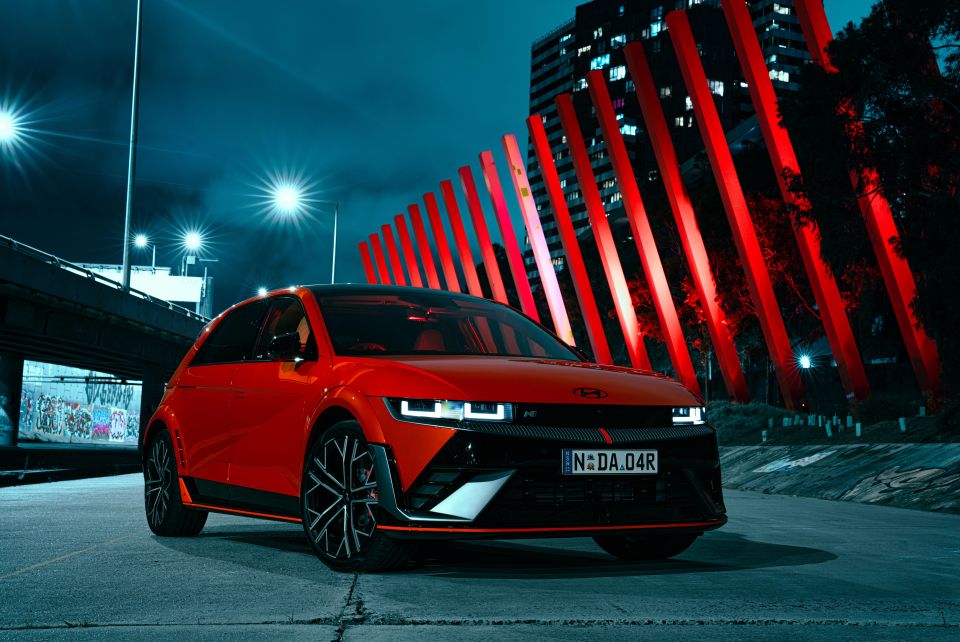
Hyundai N’s three pillars are Corner Rascal, Racetrack Capability and Everyday Sportscar. Just like the i20 N, i30 N and Kona N before it, the Ioniq 5 N delivers.
You probably won’t be beating a Porsche Taycan Turbo’s lap time, nor will it substitute for a similarly priced track-capable ICE in terms of pure engagement and noise; but far out, the Koreans have done a bloody good job.
I can imagine in a world where ICE for the masses is long gone, it’ll be cars like the Ioniq 5 N that will be a beautiful throwback to what performance motoring was like “back in my day”.

Even today, in 2024, it’s proof that petrol heads don’t need to be afraid about electric cars or the combustion engine and fossil fuels one day becoming the minority – or even extinct. I didn’t want to stop driving this thing, whether we were on the road or on the track.
It’s a great evolution of the ‘hot hatch’ formula, even if it’s more of a crossover. It’s silly fast and fun to drive, comfortable and practical enough to daily, while offering zero local emissions, usable driving range (if with a measured right foot), as well as fast to charge.
There’s also so much customisation on offer, moreso than any other N before it. It really allows you to make your car your own, as well as offer that Jekyll and Hyde split personality that great hot hatches are loved for. The options are almost limitless.
If it means anything, I would really consider one if I had the cash. Few electric cars have made made me feel like this one has.
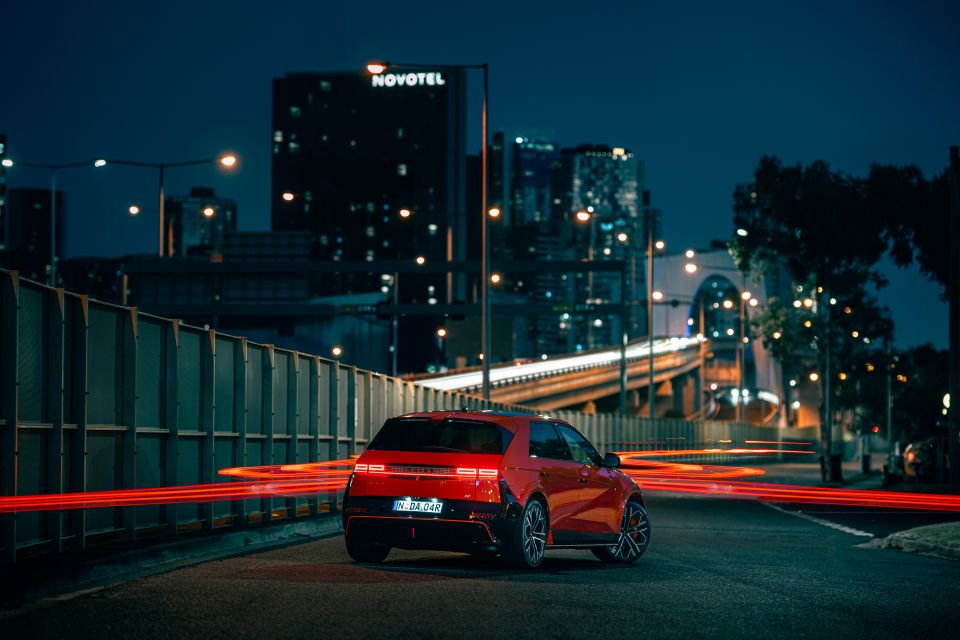
Click the images for the full gallery
MORE: Buy a Hyundai Ioniq 5 MORE: Everything Hyundai Ioniq 5
Where expert car reviews meet expert car buying – CarExpert gives you trusted advice, personalised service and real savings on your next new car.
James Wong is an automotive journalist and former PR consultant, recognised among Australia’s most prolific motoring writers.


William Stopford
1 Day Ago


Matt Campbell
2 Days Ago


James Wong
4 Days Ago


Neil Briscoe
7 Days Ago


William Stopford
9 Days Ago
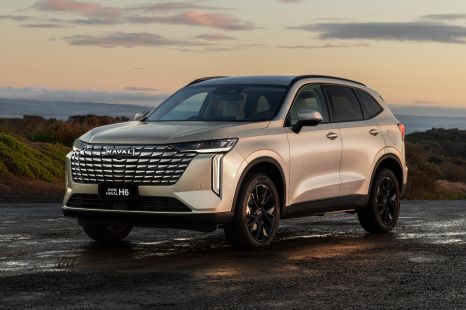

William Stopford
13 Days Ago